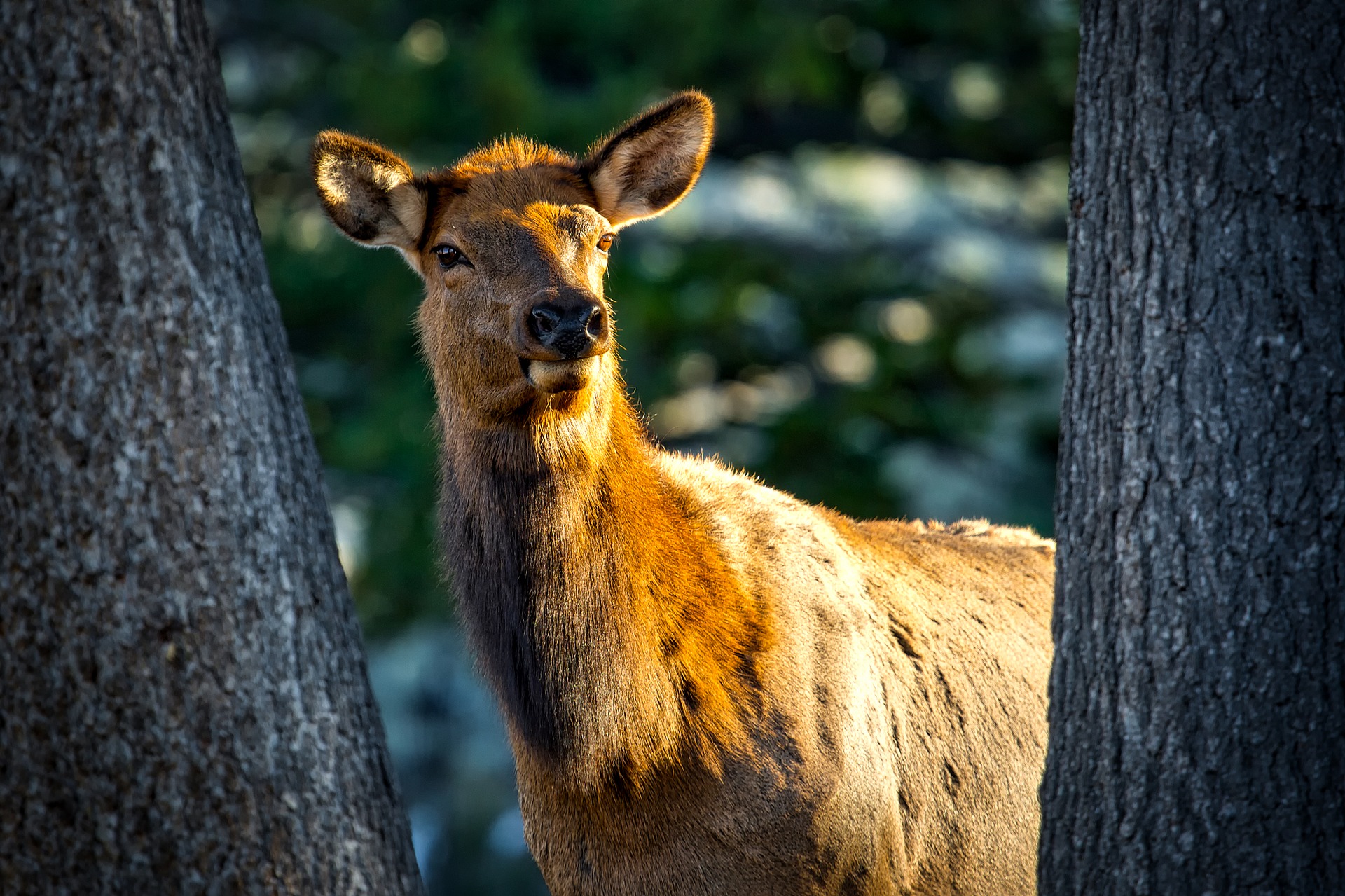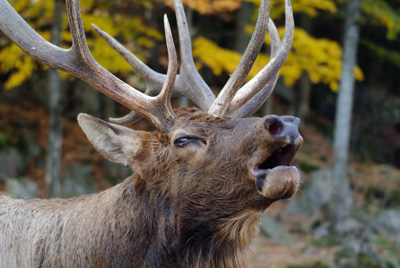Elk Hunting Scent Control Products
Are they effective?
Should you use them?

Elk Hunting Scent Control Products is Part 2 of a two part series on scent control for elk hunting. Check out Part 1 of the series here.
I saw movement in the opening on the side of the hill. Although it was over a quarter of a mile away, there was no doubt that I had spotted elk. The late afternoon September sun highlighted their tawny bodies against the light green grass and dark pines. After watching them through my binoculars for several minutes, I was sure that the four cows were alone.
Even though I was only scouting that day and not hunting, I wondered how close I could get to these wary creatures before I was detected. They moved slowly but steadily in single file, stopping occasionally to grab a mouthful of grass. At all times at least one of the cows was scanning the area for signs of danger. Their ears were constantly listening for abnormal sounds and their noses sampled the air. They were as relaxed as elk get when moving about, but were always instinctively on the alert.
As I watched the cows and tried to predict their next move, I noticed that they seemed to be following a trail. I thought that I could see more of the trail as it crossed a meadow between the elk and the spot I was standing. I connected the dots of the path in my mind and realized the elk highway passed just a few yards from my position. There was a slight but distinct crosswind blowing, so I was confident that the ladies wouldn’t smell me anytime soon.
I decided to wait and see if the little herd would stay on the trail and pass my way. I took a couple of steps closer to the path, getting better concealment from the Gambel Oak underbrush. Then I waited. It took the elk about 30 minutes to cross the 400 plus yards, but they followed the thoroughfare just as I hoped.
The cows filled my binocular lens as they approached within 20 yards. I still had a slight but predictable crosswind, and if they continued their trek down the trail I would be downwind. The oak would provide decent cover until they reached the point on the path that was closest to me. Then I would be in the open. As the lead cow rounded the tree that was my last bit of cover, she stopped in her tracks. Less than 5 yards away! I was certain that at any second the woods would explode with crashing elk. Either that, or my heart was going to explode due to the excess adrenaline!
But neither of those things happened. The cow stared at me for what seemed to be a very long time. I did my best to look like a tree in my camouflage jacket and cap, but my face was not covered. Who can know what an elk thinks? I don’t know, but she obviously knew that I wasn’t a normal part of the environment. The wind had robbed her of one of her most powerful protective senses. She couldn’t smell me.
Eventually the lead cow took a few steps down the trail, looking back at me often. Then it was the next cow’s turn to look me over. She didn’t examine me as closely as the first cow, and now it was the third cow’s turn. By this time the lead cow was about 10 yards down the path, and was still not convinced that I was something that could be ignored. She turned off the path, continuing to browse as she began to work her way behind me. Downwind.
I knew it was coming, but it still made me jump. What surprised me was how long it took. The cow didn’t smell me until she was 7 or 8 yards from me and directly downwind. Elk don’t take time to ponder when they smell danger. Her response was immediate and it triggered an instantaneous response from her 3 friends. Limbs were breaking, leaves were flying, and hooves were pounding as the four cows exited the stage in four directions.
The year was 1980, and there weren’t very many scent control products on the market at that time. In fact, the only scent control tactic I had at my disposal that day was the wind. But my close encounter of the elk kind just goes to show how important and how effective a favorable wind is to a hunter.
Does that mean that the elk hunting scent control products on the market today aren’t worth the money? Every hunter will have to make his own decision, but it’s certainly worth exploring what is available. My personal belief is that most of the scent control products can be helpful in certain situations, and I’ll take all of the help I can get. But will any of these products make you invisible to an elk’s sensitive nose?
I recently read an article about some tests that were done using K-9 police dogs who are trained to find hidden bad guys by their scent. The article was written from a whitetail hunter’s perspective and made the assumption that a trained dog’s sense of smell is similar to that of a whitetail. The author tested multiple types of scent control products, and the results indicated that the products were only slightly effective, if at all. Read the article and decide for yourself.
After reading the article, will I change what I do for scent control? Nope. What I do is easy, and is part of my elk hunting routine. I’ll share with you exactly what I do as we take a look at the elk hunting scent control products that are available.
Scent Free Soap for Hunters
As I mentioned in part 1 of this series, minimizing your body odor can go a long way to avoid detection by your prey. Most soaps available for everyday use are scented. They might make you smell more pleasant to your coworkers, but the elk will immediately notice any scent that is not part of their normal environment. Scent free soap, scent free body wash, and scent free shampoo are available so that you can stay clean and not smell like the perfume aisle in Wal-Mart.
The same goes for hunter’s soap designed for clothing. Using scent free laundry soap is a good idea when you wash your hunting clothes. After washing my clothes, I hang them outside to dry. Just make sure you don’t hang your clothes in an area where they can absorb scent from the environment. It doesn’t do much good to get your clothes clean and scent free, just to have them smell like gasoline because you hung them near your gas can.
Scent Eliminating Spray
There are multiple brands of scent eliminating spray on the market. While these products won’t actually eliminate all human odor, they can do a good job of reducing it. I spray my hunting clothes before I put them on, and I keep a small bottle in my pack so I can “freshen up” after hiking into my hunting area. I spray an extra amount on my hunting cap. Caps don’t get washed as often as other hunting clothing, and yet they absorb copious amounts of sweat during times of high activity.
Scent Free Clothing
About 20 years ago, scent free clothing became all the rage. The idea is that your hunting clothes will absorb all of your human scent. Laboratory testing shows that these products are effective at trapping human odors. But the tests performed using a K-9 police dog mentioned earlier show that the highly sensitive nose of an animal is not fooled. Whether or not scent free clothing are practical for you may depend on your hunting style. I don’t use these products primarily because I normally archery hunt for elk in early season. I do mostly spot and stalk hunting and when the weather is warm and these products are simply too hot and uncomfortable. If you plan to hunt elk from a stand then these products may be a good scent control choice for you.
Cover Scent
The use of cover scent to fool the sensitive noses of game animals may go back thousands of years. It is said that Native Americans would stand in the smoke of their campfire to cover their human odor before hunting. Some hunters even do this today. No discussion of elk hunting scent control products would be complete without mentioning cover scent. In fact, cover scent was one of the most successful products in the testing that was done with the K-9 police dog mentioned throughout this article.
Cover scent comes in various forms: liquids applied by soaking a cotton ball or rag with scent; spray on liquids; and scent wafers. They also come in a variety of scents such as earth, pine, skunk, or even elk. My concern with some of these cover scents is that even though they may mask human odor, if the scent is foreign to the elk, it still may put that animal on the alert.
While I occasionally use commercial cover scents, I normally try to go “natural”. I look for pungent materials in the area that I am hunting, and apply them to my hunting clothes or use a bit of old camo t-shirt to apply the natural cover scent. Some of the natural items I use for cover scent include fresh elk droppings and elk urine (yes, really), sage, and decaying pine needles.
Conclusion
There are many elk hunting scent control products on the market, and many advertisements imply that their products are 100% effective at eliminating or covering human scent. Depending on your hunting style, your preferences and some hunting situations, some of these products may give you some additional margin in scent elimination or cover. But the most important thing to consider for scent control while elk hunting is making sure the wind is right. Who knows, you might even have an elk approach you within 5 yards!
Latest posts by Jimmie Norris (see all)
- Elk Hunting Gear Essentials – Radios - April 26, 2020
- Elk Hunting Gear Essentials – Binoculars - February 9, 2020
- Elk Hunting Gear Essentials – GPS - January 19, 2020
- Best Camo Pattern for Elk Hunting - December 1, 2019
- Elk Hunt 2019 Part 2 - November 3, 2019




